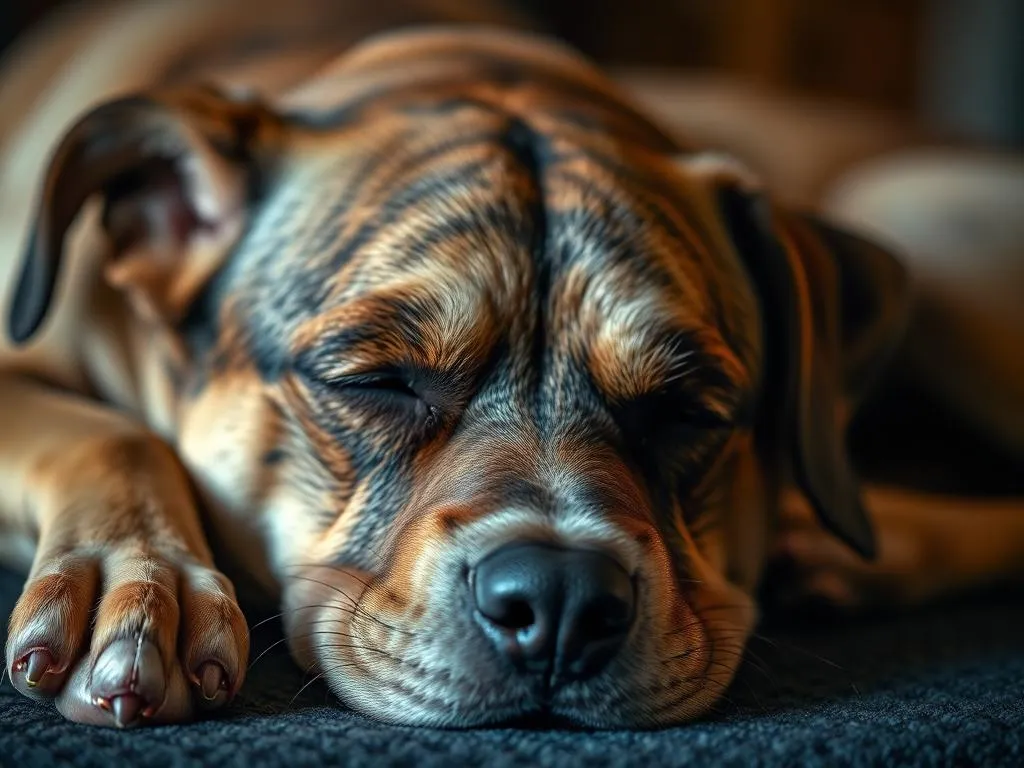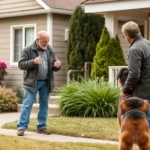
Introduction
When it comes to our beloved pets, understanding their sleeping habits can provide valuable insights into their behavior and overall health. As dog owners, we often find ourselves observing these furry companions, trying to decipher their needs and preferences. One intriguing question that arises is: can dogs sleep with their eyes open? This article will explore the nuances of dog sleep, their unique physiological traits, and what it all means for their well-being.
In the sections that follow, we will delve deep into the sleep patterns of dogs, the anatomy of their eyes, and the surprising behaviors they exhibit during sleep. By the end, you’ll have a comprehensive understanding of whether dogs can indeed sleep with their eyes open and how to ensure they get the restful sleep they deserve.
Understanding Dog Sleep Patterns
The Sleep Cycle of Dogs
Dogs experience similar sleep cycles to humans, comprising both REM (Rapid Eye Movement) and non-REM sleep. During the REM stage, dogs may twitch, whimper, or even move their paws, which indicates that they are dreaming. In contrast, non-REM sleep is characterized by deeper, more restful slumber.
Interestingly, a dog’s sleep cycles are shorter than those of humans. While humans typically cycle through sleep stages every 90 minutes, dogs do so every 20 to 30 minutes. This means that dogs may experience several short REM cycles throughout their sleep, leading to more frequent awakenings.
Duration of Sleep
The average duration of sleep can vary greatly among different dog breeds. Larger breeds, such as Great Danes and Mastiffs, tend to sleep longer, often up to 18 hours a day. Smaller breeds, like Chihuahuas, may require less sleep but are often more active during their waking hours.
Factors such as age, activity level, and overall health can significantly affect how much sleep a dog needs. Puppies and older dogs typically require more rest compared to their adult counterparts. Understanding these patterns can help you gauge whether your dog is getting adequate sleep.
The Anatomy of Dog Eyes
Structure of a Dog’s Eye
To answer the question of whether dogs can sleep with their eyes open, it’s essential to understand the anatomy of a dog’s eye. Dogs have a unique eye structure that includes eyelids, a cornea, and a nictitating membrane, commonly referred to as the “third eyelid.”
The eyelids serve to protect the eye and keep it moist. The cornea is crucial for vision, while the nictitating membrane acts as an additional protective layer that can cover the eye when needed, particularly during sleep.
Protective Mechanisms
When a dog sleeps, its eyelids typically close to protect the eyes from dust, debris, and potential injury. However, the nictitating membrane can also play a role in protecting the eye even when the eyelids are partially open. This membrane can prevent the eye from drying out and can shield it from harm, allowing dogs to maintain some level of visibility while resting.
Can Dogs Sleep with Their Eyes Open?
Explanation of Eye Movement During Sleep
During the sleep cycle, a dog’s eyes may exhibit various movements. In the REM stage, their eyes can flicker beneath the eyelids, indicating that they are dreaming. However, in deeper non-REM sleep, their eyes remain still, and the eyelids are typically closed.
Despite this, some dogs may appear to sleep with their eyes partially open. This phenomenon can occur when a dog is in a light sleep stage or is simply resting while remaining aware of their surroundings.
Instances of Dogs Sleeping with Eyes Open
Many dog owners have observed their pets sleeping with their eyes open, often leading to a sense of concern. Anecdotal evidence suggests that certain breeds, such as Bulldogs or Pugs, may be more prone to this behavior due to their unique eye structure.
While there is limited scientific research directly addressing this question, many veterinarians and animal behaviorists confirm that it is not uncommon for dogs to sleep with their eyes partially open, especially if they are in a safe environment.
Reasons Why Dogs Might Sleep with Eyes Open
There are several reasons a dog might sleep with their eyes open.
-
Instinctual Behaviors: Sleeping with their eyes open can be an instinctual behavior, allowing dogs to remain alert to potential threats in their environment. This behavior is more prevalent in wild canines, who need to be vigilant even while resting.
-
Environmental Factors: If a dog feels secure and safe, they may fall into a deeper sleep with their eyes closed. However, if they sense any potential danger, they might keep their eyes partially open to remain aware of their surroundings.
Signs That a Dog is Not Sleeping Properly
Common Sleep Disorders in Dogs
Just like humans, dogs can experience sleep disorders that disrupt their rest. Common conditions include insomnia, which may manifest as difficulty falling asleep or staying asleep, and sleep apnea, characterized by interrupted breathing during sleep.
Behavioral Signs of Disturbed Sleep
Recognizing signs that your dog is having trouble sleeping is crucial. Look for behaviors such as excessive pacing, whining, or restlessness during the night. In some cases, dogs may also exhibit changes in appetite or mood, which can indicate underlying sleep issues.
When to Consult a Veterinarian
If you notice any of the aforementioned signs or if your dog’s sleeping habits seem significantly altered, it may be time to consult a veterinarian. A professional can assess your pet’s health and provide recommendations for improving their sleep quality.
Tips for Ensuring Healthy Sleep for Dogs
Creating a Comfortable Sleep Environment
To promote restful sleep for your dog, create a comfortable sleeping environment. Invest in quality bedding that supports their joints, and ensure that their sleeping area is free from drafts or disturbances. The ideal temperature should be conducive to sleep—neither too hot nor too cold.
Establishing a Routine
Dogs thrive on routine, which can help regulate their sleep patterns. Establishing a consistent daily schedule for meals, exercise, and bedtime can signal to your dog when it’s time to wind down. Regular exercise during the day can also help tire them out, making it easier for them to fall asleep.
Monitoring Health and Wellness
Regular veterinary check-ups are crucial for monitoring your dog’s health and addressing any potential sleep disorders early on. Keeping an eye on changes in behavior, appetite, or energy levels can help you catch any issues before they escalate.
Conclusion
In conclusion, the question of whether dogs can sleep with their eyes open is nuanced. While it is not uncommon for dogs to sleep with their eyes partially open, this behavior can depend on various factors, including breed, environment, and individual temperament. Understanding your dog’s sleep needs and behaviors is essential for promoting their overall health and well-being.
As responsible pet owners, it’s important to observe our dogs and provide them with a comfortable and safe sleeping environment. By ensuring they get quality rest, we can contribute significantly to their happiness and longevity.
FAQs
Is it normal for my dog to sleep with its eyes open?
Yes, it can be normal for some dogs to sleep with their eyes partially open, especially in lighter stages of sleep or if they feel secure in their environment.
Can all dog breeds sleep with their eyes open?
While many dogs can exhibit this behavior, certain breeds with unique eye structures may be more prone to sleeping with their eyes open.
What should I do if I notice unusual sleeping patterns in my dog?
If you notice significant changes in your dog’s sleeping habits or behaviors, it’s advisable to consult with a veterinarian for a comprehensive evaluation.
Do dogs dream like humans do?
Yes, dogs do dream. The REM stage of their sleep cycle indicates dreaming, similar to humans, where they may exhibit movements or sounds.
How can I help my dog sleep better?
To help your dog sleep better, create a comfortable sleeping environment, establish a routine, and monitor their health regularly.









